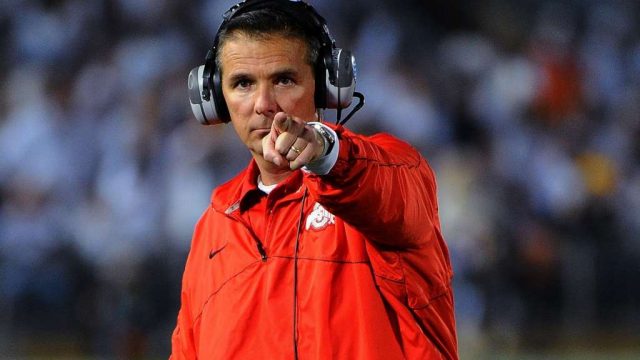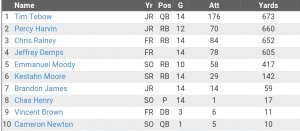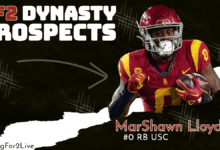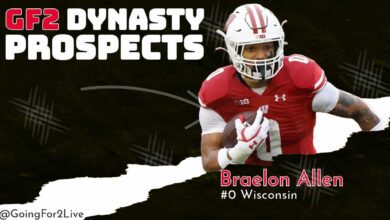
The longevity of a head coach in football comes down to one word: adaptability. How will you as a coach adapt to the ever changing landscape of football? Brad Pitt in the Movie Moneyball put it best….adapt or die. The best ones adapt. Bill Belichick of the Patriots started in the year 2000 as a defensive minded team that ran the ball with Antwain Smith and Corey Dillion to a spread team that has Tom Brady throw the ball fifty times a game. Billicheck adapted to the new emphasis on passing in today’s NFL. Nick Saban of Alabama adapted as well. In Saban’s first national championship run at Alabama in 2009 he routinely fielded run stuffing defensive lineman such at Terrance Cody (weighs 345 pounds) and Marcell Dareus (331 pounds) for a base 3-4 (with inside linebackers such as Rolando McClain weighing 255 and Dont’a Hightower weighing 265) defense on first and second down then changing the defense to a nickel defense and substituting pass rushers on third down. After losing to Auburn, Oklahoma and Ole Miss (all spread teams). As the no-huddle spread began spreading (no pun intended) around college football Saban loaded up on pass rushing defensive lineman and used the 2-4-5 alignment as a base defense to avoid being caught with 345-pound defensive lineman on the field that does not possess the endurance to keep up with a no huddle offense. Last season’s national championship team Defensive tackle Jarran Reed weighed 311 pounds (which is still heavy, but not 331 or 345), A’Shawn Robinson weighed 312 pounds, starting linebackers Reggie Ragland weighed 247 and Reuben Foster weighed 240. As Saban adapted defensively Urban Meyer adapted offensively.
Meyer started his coaching journey started at Bowling Green. While at Bowling Green Meyer came up with his version of the spread option offense. From Bowling Green, Meyer went to Utah and took college football by storm running the spread option (and making Alex Smith a number one pick as well). After a couple of success seasons at Utah Meyer was promoted to Florida. While at Florida Meyer married the single wing and the spread option offense to win two national championships.
Meyer’s spread option offense allowed several different players to run the football keeping the defense guessing as who is going to run the football. While at Utah in 2004 (Meyer’s first undefeated season) the leading rusher was Marty Johnson at 802 yards. Quinton Gather was second at 654 and quarterback Alex Smith had 631. Each ball-carrier had at least 100 carries for the season. Meyer’s first national championship at Florida in 2006 followed the same method of spreading out carries for rushers. Deshawn Wynn led the team with 699 yards followed by Tim Tebow and Percy Harvin with 469 and 428 yards respectively. In Meyer second national championship in 2008 with the Gators Tim Tebow, Chris Rainey, Percy Harvin and Jeff Demps all went over 600 yards rushing. Spreading the ball around is typical of option teams.  In contrast, Georgia Tech (a pure option team) routinely has two or three runners with over 600 yards rushing. Spreading the ball around and running the spread option is also a great recruiting tool in the state of Florida (most recruited state for skill position players….there is speed then there is Florida speed). Urban Meyer can sell recruits on the fact that my offense will put the ball in your hands.
In contrast, Georgia Tech (a pure option team) routinely has two or three runners with over 600 yards rushing. Spreading the ball around and running the spread option is also a great recruiting tool in the state of Florida (most recruited state for skill position players….there is speed then there is Florida speed). Urban Meyer can sell recruits on the fact that my offense will put the ball in your hands.
In addition to the option at Florida Meyer ran a gap blocking power based offense. Gap or power offenses’ deliver double team blocks then pull a guard or use a tight-end/fullback/H-back to lead through the hole. Chris Brown of smartfootball.com does an outstanding job explaining this concept in detail. his concept is not new (nothing in football is) Glenn “Pop” Warner used power to build the single wing offense.  Pro-style teams use a fullback to open up a hole for the running back. Joe Gibbs used an H-back to open up holes for the tailback.Spread teams use motion to create hesitation amongst linebackers and safety’s enabling the pulling lineman to pave the way for the tailback. Using Power with a 6’3 245-pound quarterback named Tim Tebow and option principles brought Florida two national titles, however, when Tebow left for the NFL Meyer could not find a replacement to run the power play effectively .
Pro-style teams use a fullback to open up a hole for the running back. Joe Gibbs used an H-back to open up holes for the tailback.Spread teams use motion to create hesitation amongst linebackers and safety’s enabling the pulling lineman to pave the way for the tailback. Using Power with a 6’3 245-pound quarterback named Tim Tebow and option principles brought Florida two national titles, however, when Tebow left for the NFL Meyer could not find a replacement to run the power play effectively .

After taking a sabbatical from Florida Meyer landed the head coaching position at The Ohio State University. This move may seem like going from one powerhouse program to another but moving from Florida to Ohio State changed everything for Meyer. First let’s look at the recruiting, as mentioned before the state of Florida has the most skill position players available in the country, Ohio, on the other hand, does not. Ohio is more known for offensive lineman and powerful running backs. In 2012 (Meyer’s first season in Columbus) Quarterback Braxton Miller became Meyer’s first 1,000-yard rusher, running back Carlos Hyde was second with 970 yards rushing. The following year in 2013 both Miller and Hyde finished over a thousand yards with Hyde finishing with over 1500 yards. After ten years coaching in college football what changed? why the influx of 1,000-yard rushers? One theory could be recruiting; as mentioned before Ohio State does not have the caliber of skill position players that Florida did to run the spread option. Another theory is the change in schemes. Instead of power, gap style blocking Meyer adapted to zone blocking
Zone aspect of the play call refers to the blocking assignments performed by the offensive linemen. In a zone scheme lineman do not necessary block the man in front of them, but blocks in the direction of the play. The goal of zone blocking is to have double teams at the point of attack then move up to the second level. Zone blocking was made famous by Mike Shannon and his offensive line coach Alex Gibbs while at Denver. Gibbs zone blocking allowed the Broncos to plug and play 1,000-yard rushers every season. More on Gibbs teachings can be found here. College football uses zone blocking in various ways. Teams like LSU and Alabama use zone blocking within a pro-style offense while option teams such as Oregon, Auburn, Arizona (Head Coach Rich Rodriquez practically invented this) began using the zone read. A zone read leaves the backside defensive end unblocked and reads him. Essentially the quarterback “blocks” the backside defensive end by reading him. A further explain of the entire play can be found here and here. If the end chases the tailback the quarterback keeps the ball if the end stays home and takes the quarterback the running back takes the ball upfield.

In Meyer’s offense, the inside zone was attached to a bubble screen. After watching Ohio State vs. Michigan in Meyer’s first year in Columbus on ESPN classic (when you have the stomach flu all weekend your wife “allows” you to watch football games all day) you saw this again and again. Pound Carlos Hyde and Braxton Miller with inside zone read then throw the screen to Devin Thomas. Another counter to the inside zone is the sweep play. When defenses began to adjust and pinch and slant their defensive lineman to the inside Meyer called outside zone sweep plays. Two years ago versus Alabama in the inaugural College Football Playoff is a perfect example. Saban and Defensive Coordinator Kirby Smart (now the head coach at Georgia) pinched in their defensive line and linebacker and Ohio State ran outside.
With JT Barrett now fully entrenched as the starter (he should have started every game last season. Very difficult to judge a quarterback on three games especially since Ezekiel Elliot went off during those three games ( 696 yards and eight touchdowns against Wisconsin, Alabama and Oregon). I expect Meyer to implement those three plays (inside zone read, outside zone read and screen passes) this season to complement Barrett’s running ability. Losing Elliot, Michael Thomas, Braxton Miller and Jalin Marshall Meyer will have to rely on Barrett’s running ability to move the chains offensively until other options within the offense develop. With tough road games at Oklahoma and Michigan State (not to mention Michigan at home) Meyer work offensively is certainly cut out for him this upcoming season.
Love our content? Check out the GoingFor2 Live Podcast Network!
ATTN Dynasty Commissioners: Do you want to do something cool for your league? How about a 1-hour live show dedicated to YOUR league? Team-by-team breakdowns, rankings, and more. For details and to book a show, visit: GoingFor2.com/plp.





